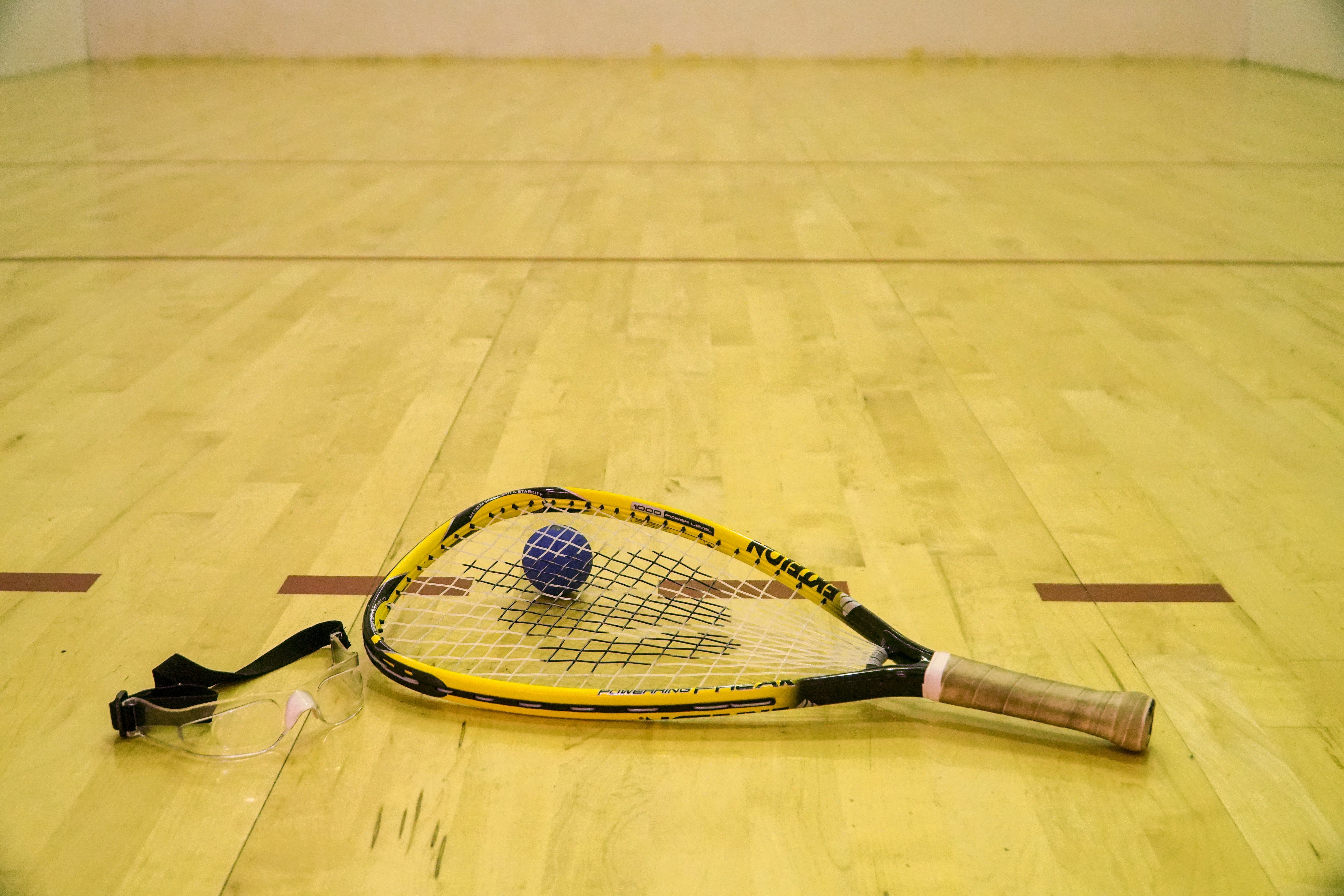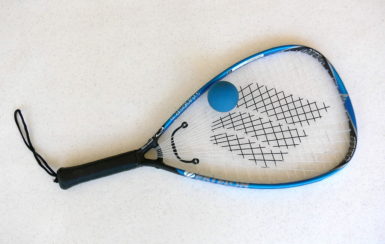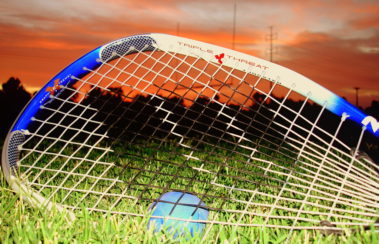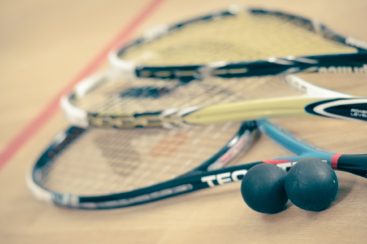People have been hitting balls against walls for hundreds of years, but where did this sport of racquetball come from? We opened our history books and dug out the history behind the sport. If you're looking for a more in-depth explanation of the rules, check out How to Play Racquetball. Wondering about the significance of all that gear? Head over to What Equipment Do You Need to Play Racquetball?
The Beginnings

Joe Sobek with his racquet
In the 1940s, Joe Sobek, a professional tennis and handball player in the US, grew bored with indoor court sports. He wanted to make a new sport that was fast-paced but easy to learn. With the help of a friend, he combined rules of tennis, handball, and squash to create what he called "paddle rackets." The earliest iterations of this sport were played on handball courts with a wooden racquet he invented.
Because the rules were relatively simple, the sport spread rapidly over the next few years. Sobek founded the National Paddle Rackets Association in 1952 and traveled around the country to promote his new sport. With this, the rules became more solidified and small tournaments started popping up all over the country. During a meeting, the pro tennis player Bob McInerney (who was actually from San Diego) suggested they change the sport's name to "racquetball." This was approved, and "paddle rackets" henceforth became "racquetball."
International Popularity
In 1969, Robert Kendler, the head of the US Handball Association, created the International Racquetball Association (IRA). The same year, the IRA held the first official racquetball tournament in St. Louis. Within the next couple of years, sporting goods stores had started selling racquetball gear. The racquets changed from wood to aluminum, then fiberglass and later graphite, resulting in lighter and stronger equipment. And while the specific origin of the rubber ball is disputed, Joe Sobek is also credited with its invention and its quality improved alongside the racquets.
By the 70s, racquetball was the fastest-growing sport in America. Sports clubs around the US started building racquetball courts. The sport even expanded to international popularity thanks to its fast pace and high intensity, and the first world championship was held in 1981. The Olympic Committee took notice and classified racquetball as a "developing" Olympic sport. Despite efforts to make it official, though, it never quite achieved the popularity required to become an Olympic event.
The Decline
By the 90s, the initial excitement had worn off and racquetball saw a decline. This fall is due to multiple factors—the advances in racquets and balls made it harder for the average viewer to follow the ball, so televised matches were unusual. The increased pace made it likewise a more intimidating sport for beginners. Fewer people played and talked about it, so gyms and sports clubs began converting their racquetball courts for other activities.
That's not to say that nobody plays racquetball anymore, however. 2017 numbers estimate 3.5 million players in the U.S.. Why not pick up a racquet and ball and make that 3.5 million-plus 1?






Comments 2
Leave A Comment